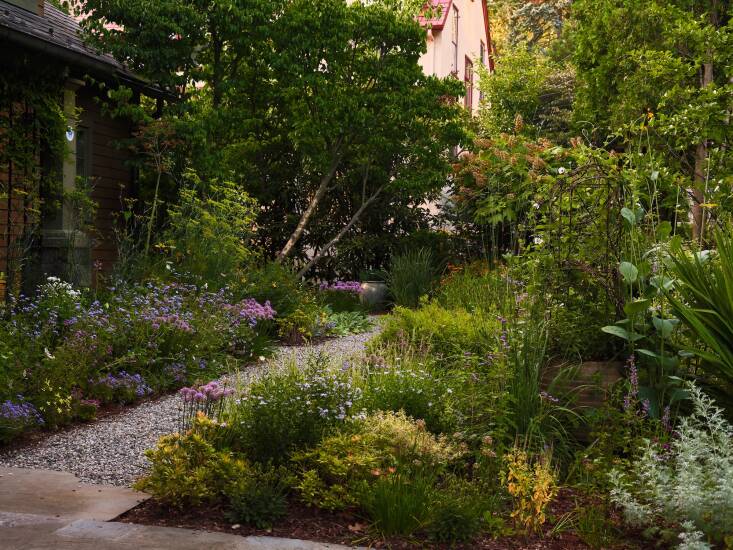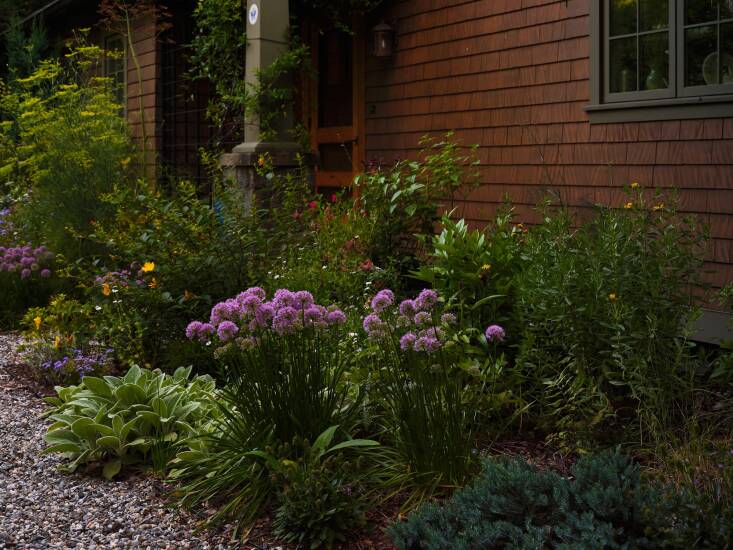Oftentimes landscape designers are called in to execute a one-time overhaul or to create an instant landscape for a site that’s been ravaged by construction. Every once in a while, though, they’re enlisted for more nuanced work, such as when a mature garden needs a new steward and editor. The “before and after” results may not be as dramatic, but the process of refinement can take a garden from good to great. Such was the case when landscape designer and ISA-certified arborist Ashley Lloyd was brought in to usher a garden in lower Westchester into its next chapter.
The garden had been lovingly designed and tended by a fine gardener for many years, but after his departure, weeds had overtaken the property and much of the perennial layer had been lost during construction projects, including a new retaining wall. “The goal was to create layered texture, seasonal contrast, and movement—and to design with the garden’s future evolution in mind,” Lloyd says.
Arriving as the homeowners were in the midst of rethinking the garden, ended up being a gift. “I had time to observe the land—its microclimates, light shifts, drainage patterns—and respond accordingly,” Lloyd says. Building on the existing palette of shrubs and evergreens, she brought in more native and pollinator plants and created moments that would consistently surprise and delight the clients. She also designed dozens of seasonal planters and new outdoor lighting.
Through her years of working on this garden, Lloyd learned that “the best design happens in relationship and collaboration with the land and not from a fixed plan,” she says. Lloyd recently relocated to the West Coast, handing this garden off to its next steward in much better shape than she found it.
Take a tour of the resulting garden, a layered landscape that evolves through the seasons.
Photography by Kyle J Caldwell.



